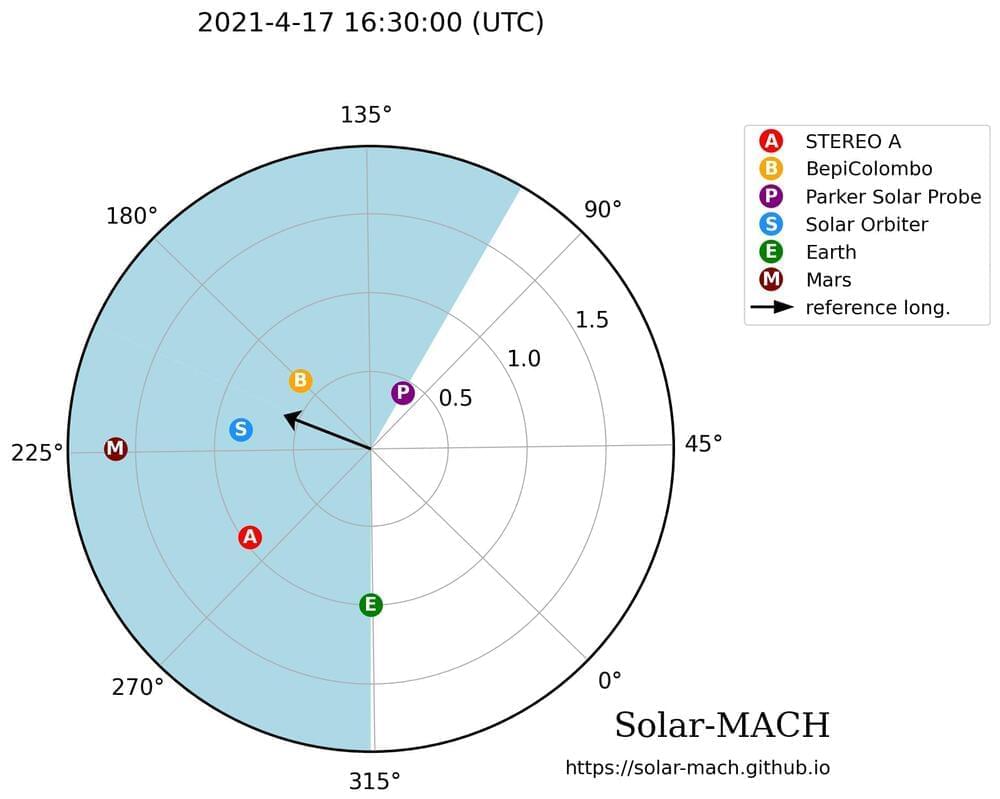April 17, 2021, was a day like any other day on the sun, until a brilliant flash erupted and an enormous cloud of solar material billowed away from our star. Such outbursts from the sun are not unusual, but this one was unusually widespread, hurling high-speed protons and electrons at velocities nearing the speed of light and striking several spacecraft across the inner solar system.
In fact, it was the first time such high-speed protons and electrons—called solar energetic particles (SEPs)—were observed by spacecraft at five different, well-separated locations between the sun and Earth as well as by spacecraft orbiting Mars. And now these diverse perspectives on the solar storm are revealing that different types of potentially dangerous SEPs can be blasted into space by different solar phenomena and in different directions, causing them to become widespread.
“SEPs can harm our technology, such as satellites, and disrupt GPS,” said Nina Dresing of the Department of Physics and Astronomy, University of Turku in Finland. “Also, humans in space or even on airplanes on polar routes can suffer harmful radiation during strong SEP events.”










Comments are closed.